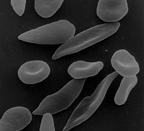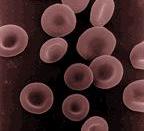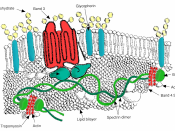Explain how homopoiesis occurs and how it results in mature red blood cells. How are other formed elements in blood made? Explain how homopoiesis is regulated by negative feedback mechanism. Describe three conditions, which would interfere with this and result in anemias.
The process of homopoiesis takes place in the red bone marrow, which is a soft network of reticular connective tissue that borders on wide blood capillaries called sinusoids. In this network are immature blood cells, macrophages, fat cells, and reticular cells (the fibroblasts that secrete the fibers). Each type of blood cell is produced at different rates, according to the body's changing needs. All formed elements of blood begin as the same type of stem cell, the hematopoietic stem cell. The appearance of membrane surface receptors, which respond to different hormones, are what determine which type of formed element a stem cell will become.
RBC production (erythropoiesis) starts when a hemocytoblast known as a myeloid stem cell that becomes a proerythroblast.
These then become early (basophilic) erythroblasts that produce millions of ribosomes. In these first two phases, the cells divide many times. Hemoglobin synthesis and iron accumulation occur while the early erythroblast becomes a late erythroblast and then a normoblast. It's cytoplasm color changes as the blue staining ribosomes are masked by the pink color of hemoglobin. When the normoblast gains a hemoglobin concentration of about 34% the cell collapses inward and gains its biconcave shape. It is now a reticulocyte (young erythrocyte) because it still contains a slight network of clumped ribosomes and rough endoplasmic reticulum. The whole process from hemocytoblast to reticulocyte takes 3-5 days. Now, filled almost to bursting with hemoglobin, the mature cells diffuse through the sinusoids and enter the bloodstream and begin oxygen transport. They usually become mature erythrocytes within two days of...



Thanks
very informative helped me in a test thx
0 out of 0 people found this comment useful.